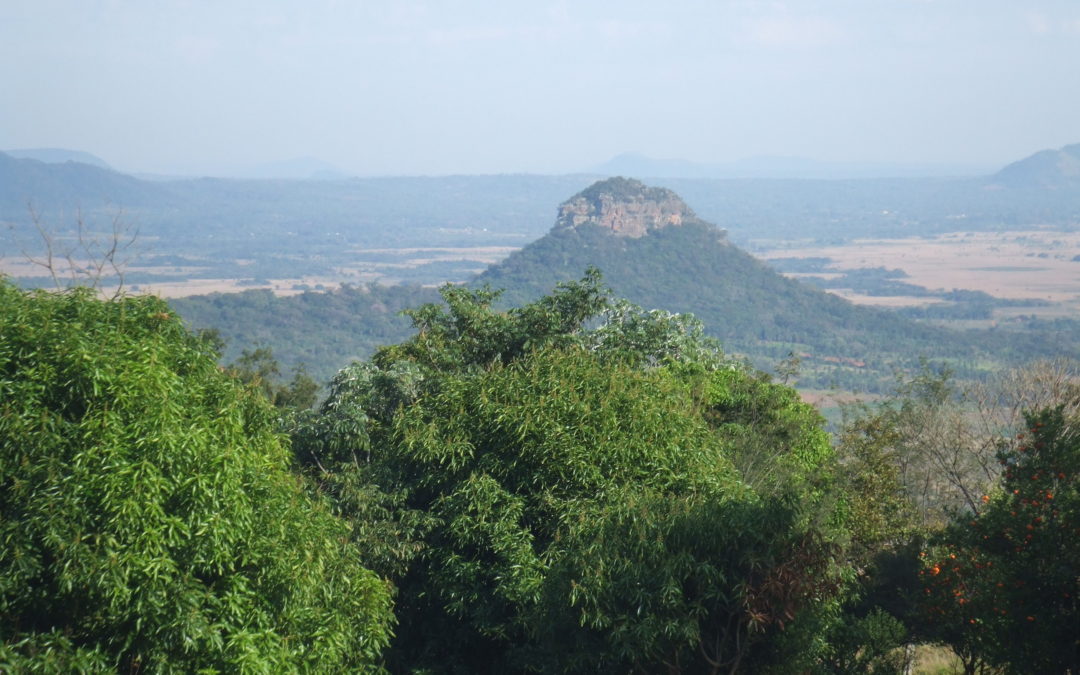Paraguay may seem to be a quiet geologically stable place but a good look around its landscape will show that that has not always been the case.
Across Eastern Paraguay rising out of the flat lands are a number a steep conical hills which are all that remains of the cores of long dead volcanoes.
With much of Paraguay being flat low lands, prone to flooding and ideal as ranch land they do make very prominent even when far off towards the horizon. They are typically very steep sided and thickly wooded apart from a bare rock summit rising above the trees.
Not far from where I live is there is a good example of such a hill. It is shown in the photograph above. This a Cerro Mbatovi. It rises abruptly from the levels around Paraguari and is visible at a great distance. It is surrounded by flat ranch lands and erupts almost vertically from the plains. As with many of these old volcanic hills its sides are too steep to by climbed without the aid of ropes.
Another larger example, also not far from where I live, is the town of Caacupe. From ground level there are few clues that the area had ever witnessed any volcanic activity at all. It is only by climbing to high point such as the roof of the cathedral can the truth be found. For once high above the streets and houses the ring of hills that surround the town can be seen. These hills form the rim of the volcano that once existed where Caacupe now sits. The whole town sits within the caldera of and ancient extinct volcano. As the bowl enclosing the town is several miles across this would have been a mighty volcano.
These volcanic features are only found in the east of Paraguay. To the east of the Paraguay River. To the west across the Chaco the soils are all sedimentary. It has however been a long time since there was any volcanic activity in Paraguay. The rocks of the hills all date to a time more than 200 million years ago, when the geography would have looked very different to that seen today.
High and for the most part inaccessible they have in the most part been left to nature. The ancient forests and jungles that cloak them may be some of the oldest pieces of woodland in the country. The old growth trees left standing out of the reach of loggers. In addition far fewer non native species are found on these steep hillsides than in most other parts of the country which would have been cleared and then regrown many times.
The isolation also favours the wildlife. Many creatures such as opossums and armadillos find food and shelter in the undisturbed woodland and the sheer rock faces make ideal nesting sights for birds out of the reach of predators.
One common Paraguayan bird that finds these high inaccessible vantage points ideal is the vulture. High atop bare rocks they place their nests. From there they have an unbroken view across the surrounding countryside and are lifted effortlessly high in the sky by the thermals of hot air forced upwards upon meeting with the steep hillsides.
So as such these old hills form an important geological as well as natural treasures for Paraguay that is accessible to all who wish to seek them out.


Fascinating. Part of Paraguay’s soul as a “nation under the sign of fire”.
There is so much hidden in plain sight awaiting those who take the trouble to look. From my home I look up upon sandstone cliffs the banded rocks of which have their own story to tell